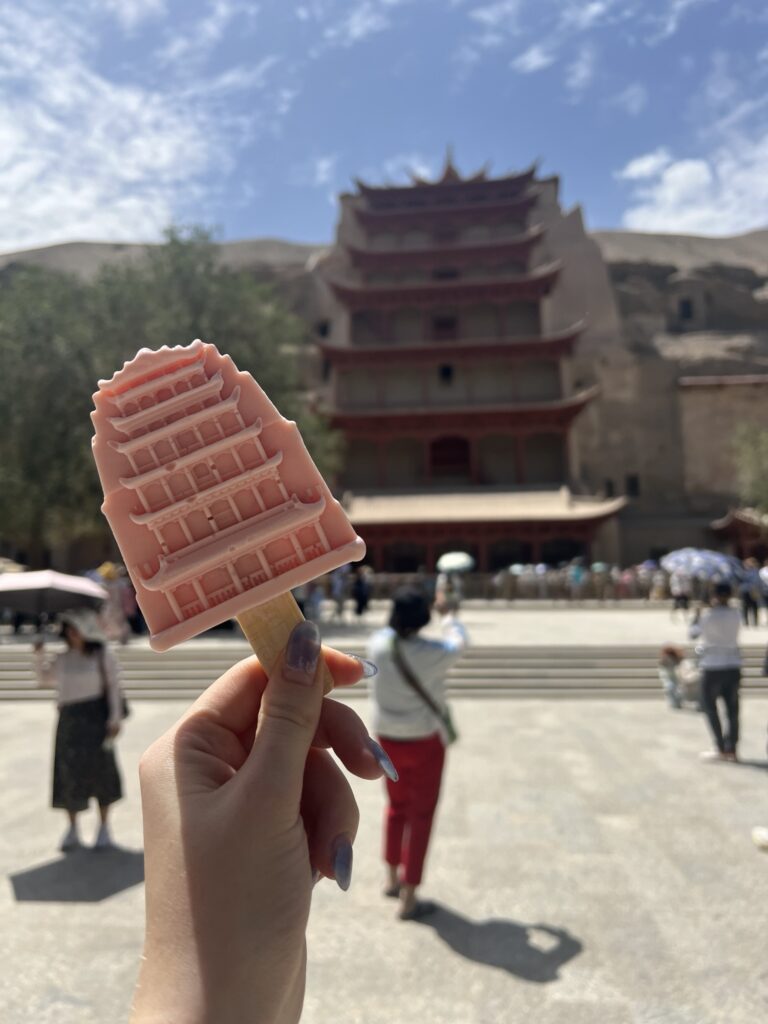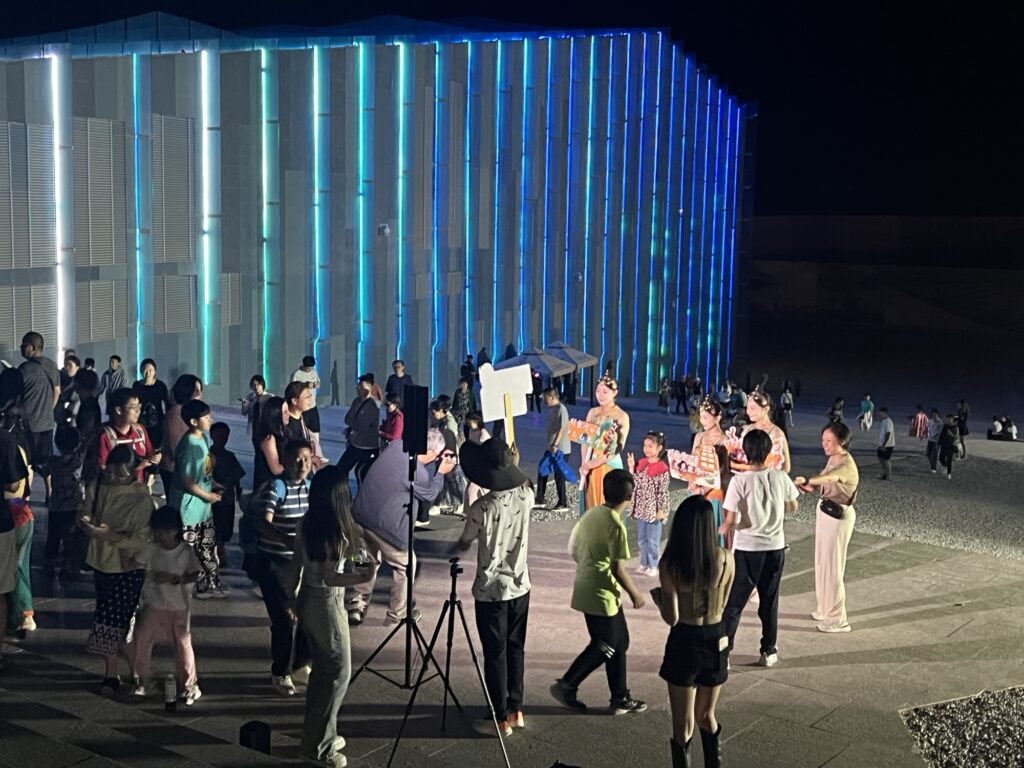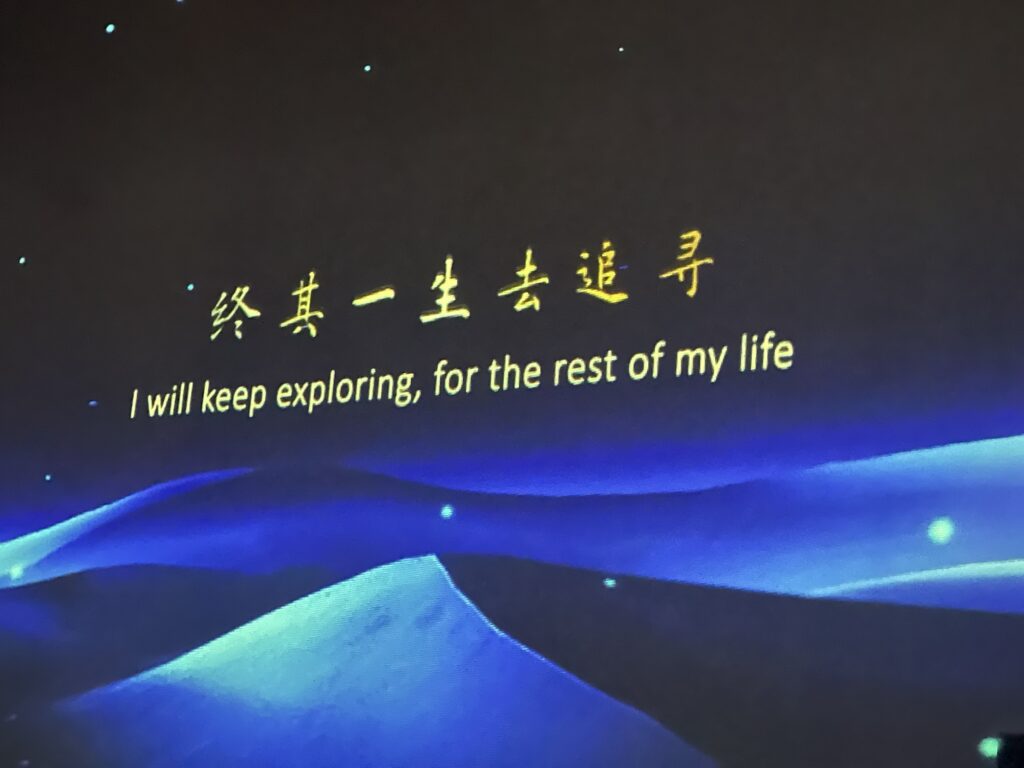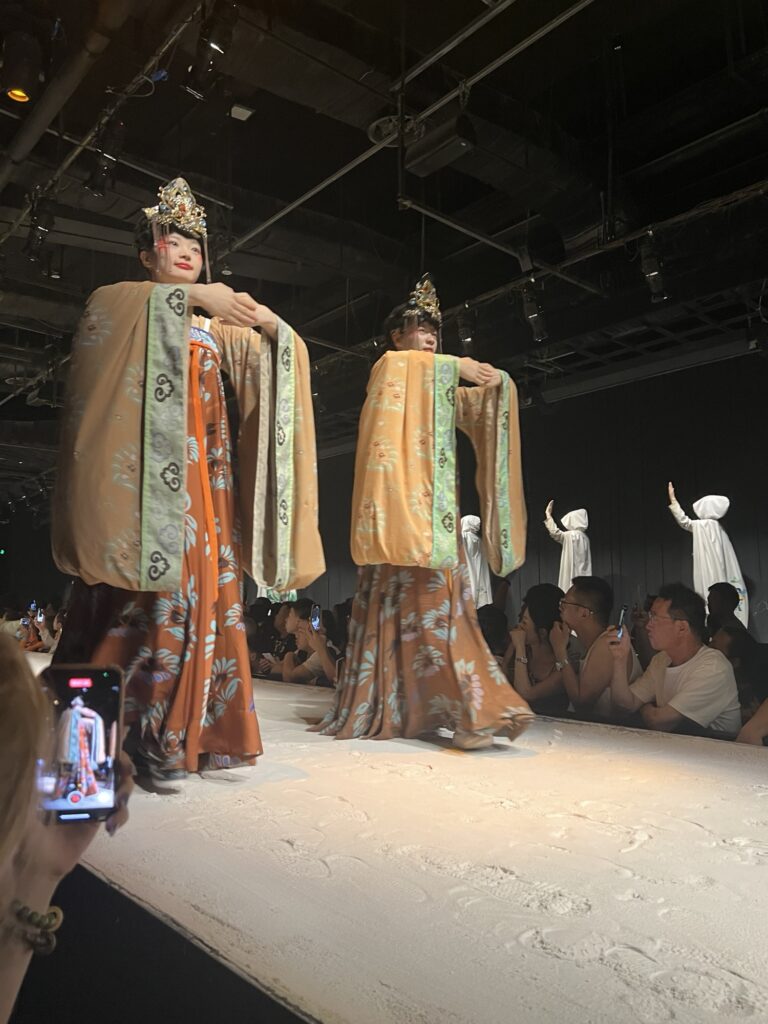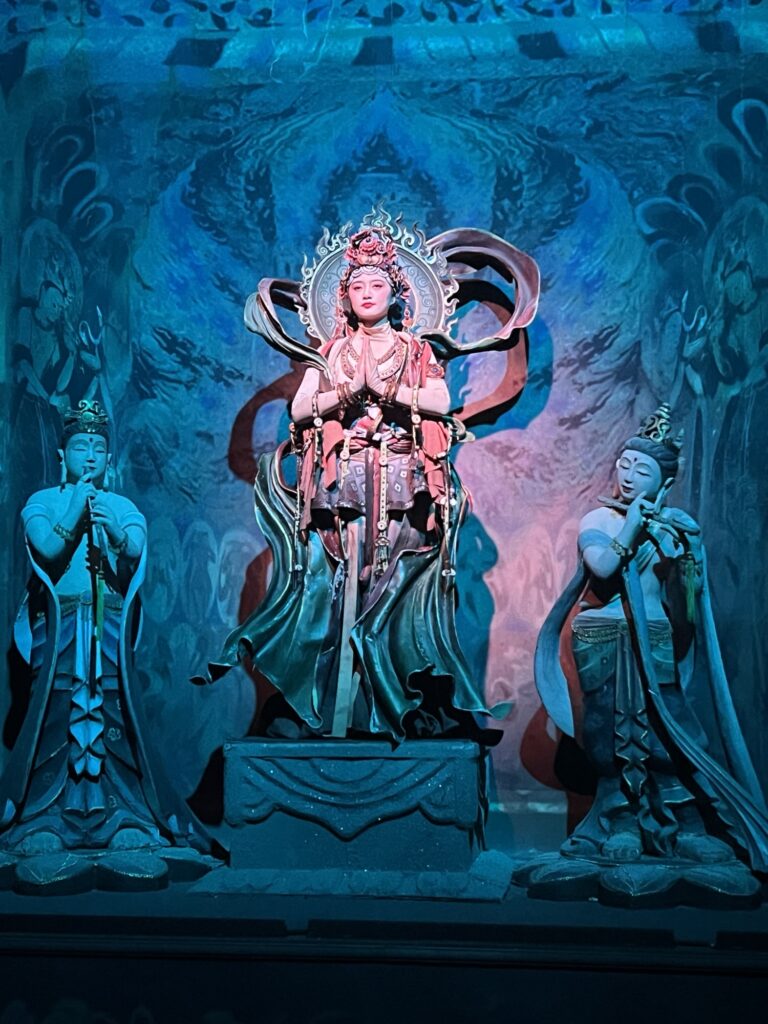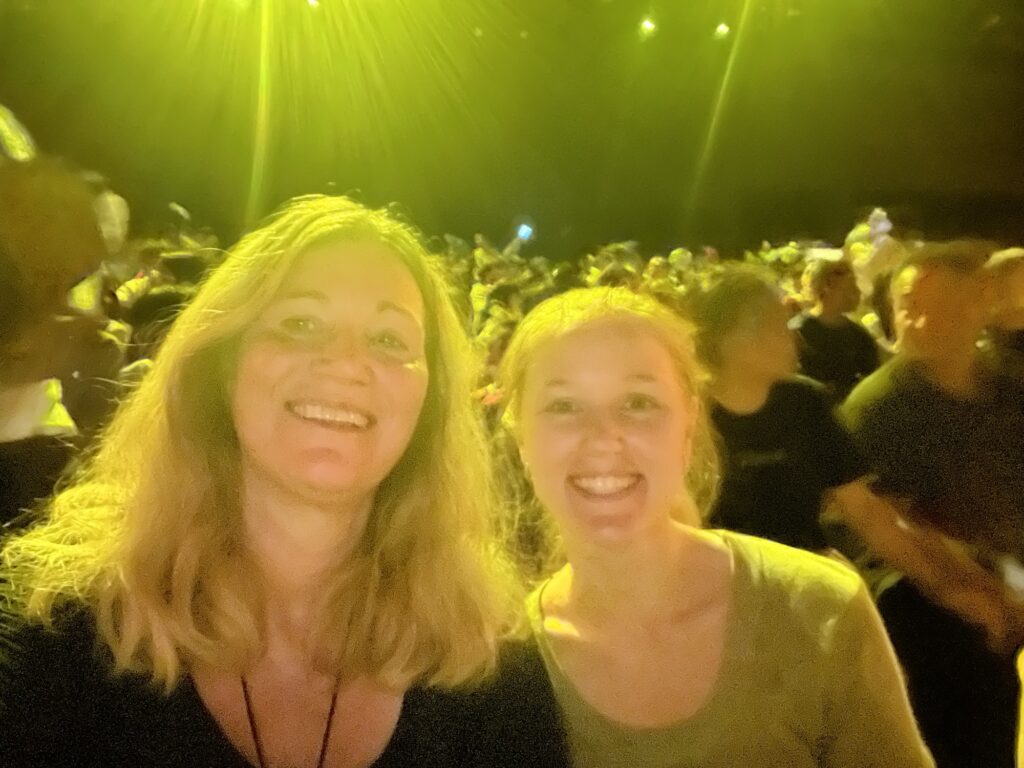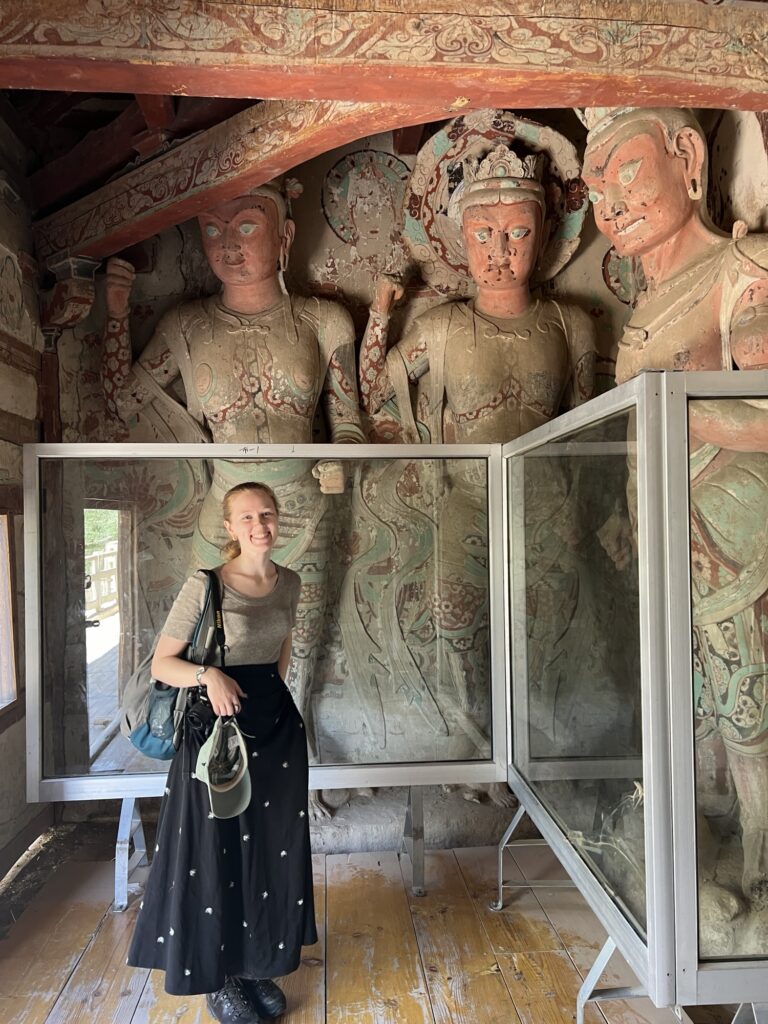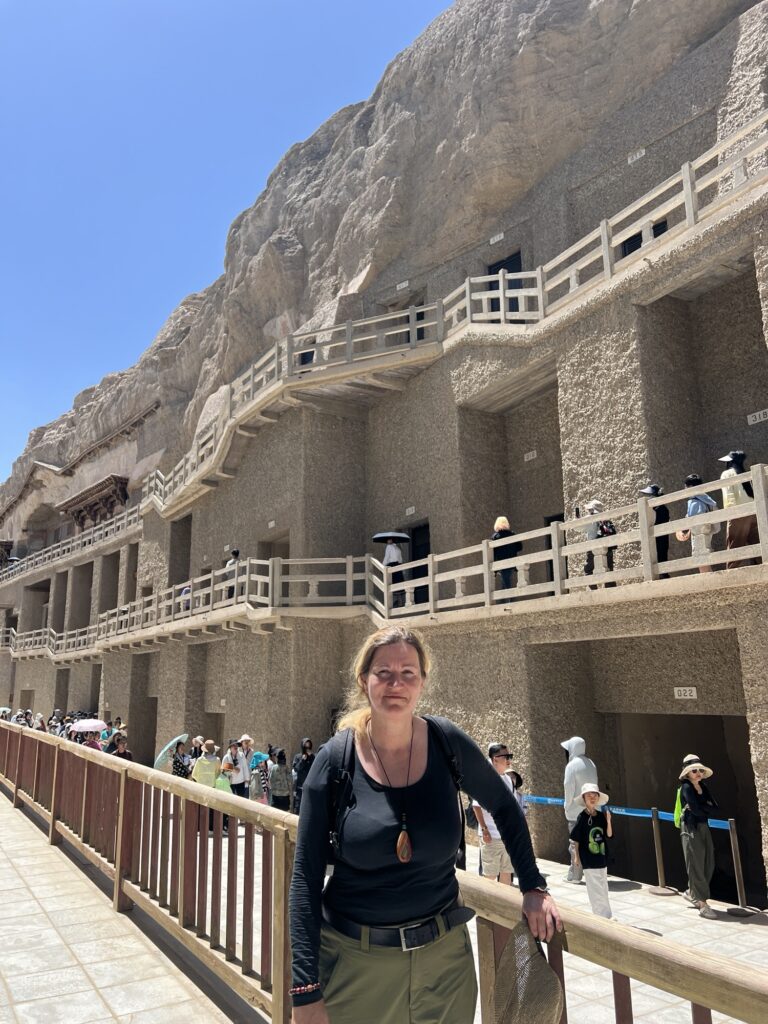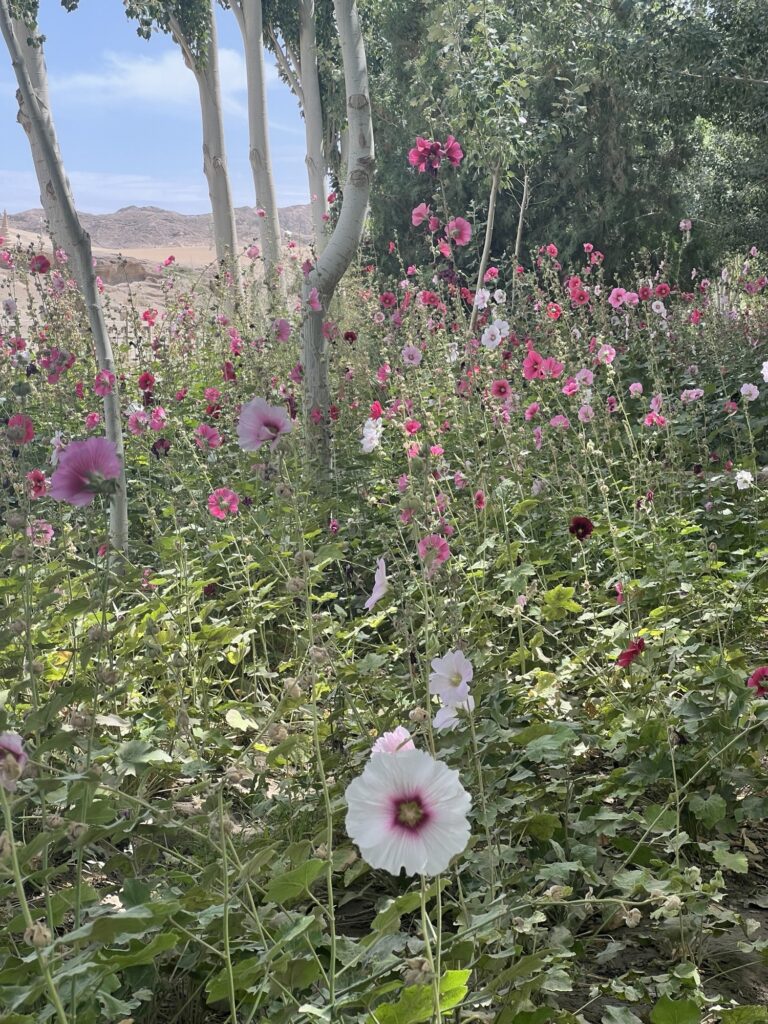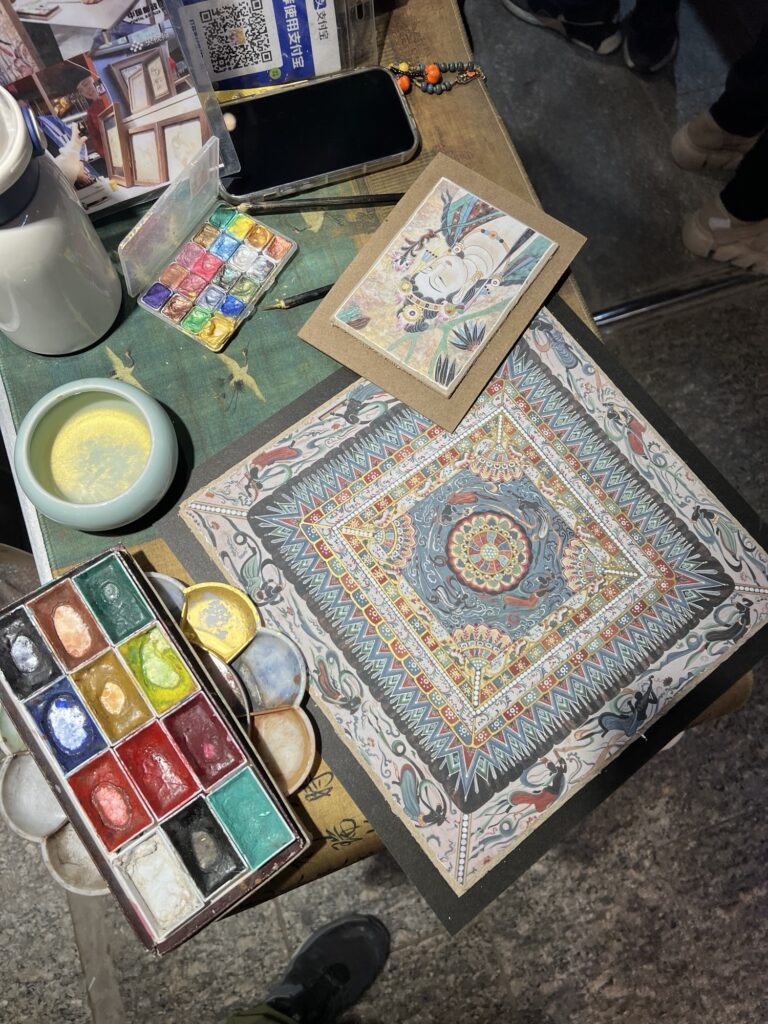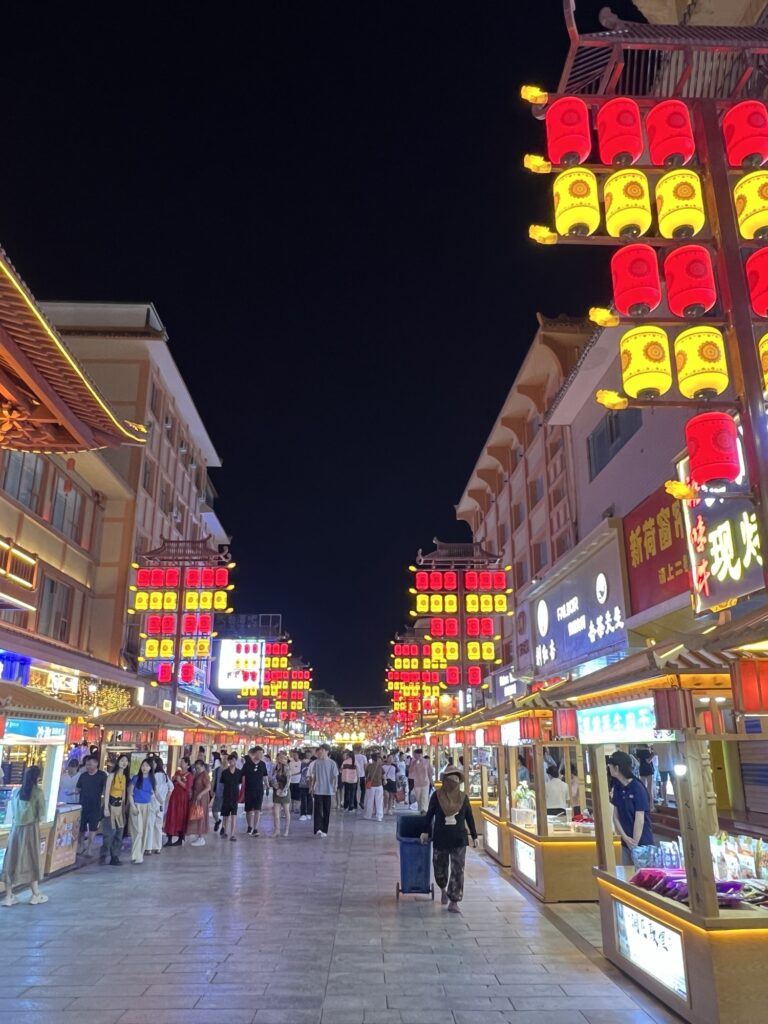China / Kina. Gobi desert. Dunhuang.
Dunhuang is this tiny city of merely 0,2 mio indb. and yet and important hub as a traveler as it’s on the ancient Silk Road in the Gobi Desert 🐪 leaving us to spend 4 days here.
From this small town we ventured to
- the UNESCO World Heritage Site Magao, where Buddhism had arrived in China from India and brought relief from the hardships of life. 500 caves in the cliffs with carved buddhas inside remain and remind us.
- the remains of the Chinese Wall from the Han Dynasty to protect against the Huns from Mongolia. Also UNESCO. In the midst of a dessert so easy that only now it started to dawn on me how hard it must have been for the first traders on the Silk Road to cross this desert.
- The moon shaped lake next to a traditional building in the huge desert turned into a playground for adults with a thousand camels 🐫 for people to ride. Gliders. Helicopters. Hot air balloons. Off roaders. Clearly Chinese social media recommend this place for its sunset. 🌅 we never saw so many people hiking up sand dunes to enjoy sunset next to all the others. NomadMania has this place under Bizzarium and rightfully so. Part of the unesco geo parc.
- Gliding high above the Gobi desert 🏜️ (!)
- riding on camels 🐫
- two theatre performances of spectacular kind.
- Mosque only for men, but with kind men outside ready to chat and let us look in.
- The night market with a selection of handicrafts and a section for middle eastern food provided by the local Muslim community.
Dunhuang was of great importance as a defensive and cultural center on the western borders of the Chinese empireat various points in its history. The routes west going north and south of the Taklamakan Desert split near Dunhuang. Dunhuang went into a steep decline after the Chinese trade with the outside world became dominated by southern sea-routes.
Dunhuang, was an important Buddhistcenter between the years 500 and 1,000 AD, and hosted a large number of monasteries. These Han Dynasty Great Wall Relics are located very close to Yumen Pass.
Many languages were spoken there, including Chinese, Tibetan, Uyghur, Tangut and Hebrew.
